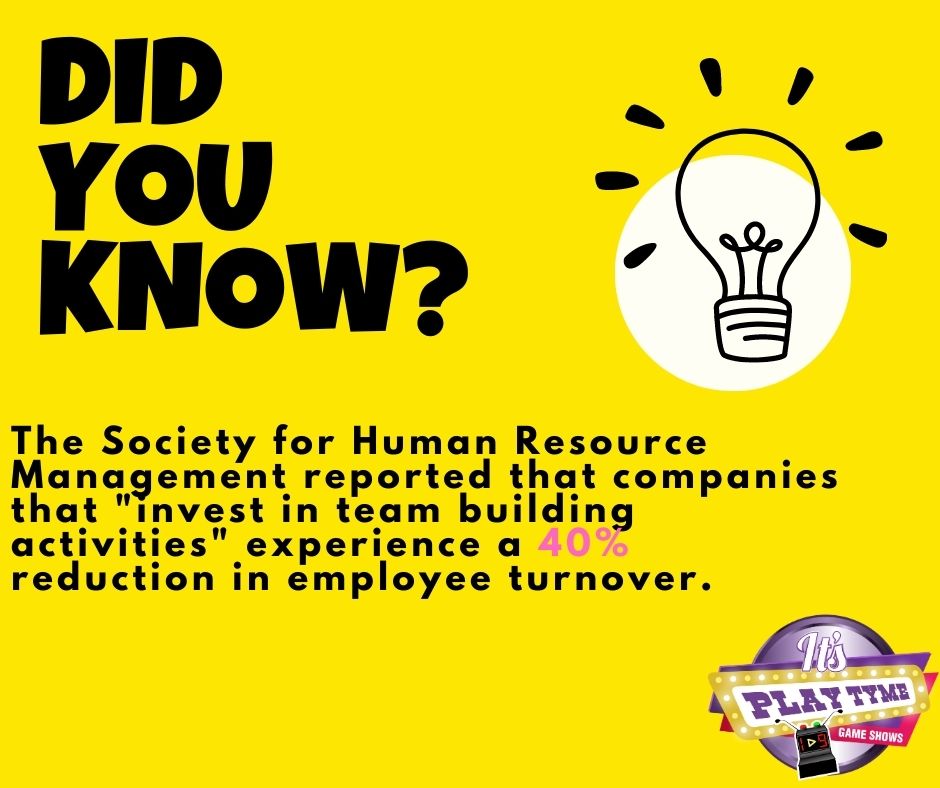Team Building and the 4 C’s are fundamental aspects in creating a cohesive and successful team.
By understanding and even mastering the 4 C’s Collaboration, Communication, Cooperation, and Connection, your team can unlock their full potential.
Understanding the 4 C’s” of Team Building
These four key elements lay the foundation for effective teamwork and optimize the team’s ability to achieve specific goals.
Collaboration: Fosters a sense of unity, encourages innovative thinking, and promotes a supportive and inclusive work environment.
Communication: Open and transparent communication helps team members understand their roles and responsibilities, share ideas, and address any conflicts or challenges that may arise.
Moreover, by promoting cooperation among team members, individuals can leverage their unique skills and strengths to achieve collective success.
Finally, effective coordination ensures that tasks are allocated appropriately, deadlines are met, and a sense of order is maintained within the team.
These four components work in harmony to create a strong team foundation and drive towards success. Let’s dive in some more.

Employee turnover
In addition to the 4 C’s, it is important to emphasize the significance of individual contribution.
While teamwork is essential, recognizing and valuing each team member’s unique skills, perspectives, and experiences is essential.
This inclusive approach fosters a culture of respect and appreciation, motivating individuals to actively engage and invest in the team’s goals.
By creating a supportive and inclusive environment, team building initiatives become more effective and sustainable in the long run.
One of the most remarkable examples of the power of team building and the 4 C’s lies in the story of a multinational athletic apparel company.
Facing declining sales and a lack of innovation, the company implemented team building workshops focused on strengthening collaboration, communication, cooperation, and coordination within their design and marketing teams.
As a result, the teams became more cohesive, sharing ideas, and working seamlessly together. This led to the creation of groundbreaking products that resonated with consumers and revitalized the company’s brand.
By putting a strong emphasis on team building and the 4 C’s, this company was able to turn their fortunes around and achieve significant growth and success in a highly competitive market.
This story showcases the transformative impact of effective team building and the importance of integrating the 4 C’s into an organization’s culture.
Storytime: Understanding the 4 C’s of Effective Team Building
To illustrate the power of mastering the 4 C’s in team building, consider the story of a project team that was struggling to meet their deadlines and deliver high-quality work.
Upon realizing the importance of effective communication, collaboration, creativity, and conflict resolution, the team began implementing strategies to enhance these areas.
Through open and transparent communication, they were able to address any misunderstandings or gaps in knowledge, building a stronger sense of collaboration.
By encouraging creativity and innovation, the team was able to generate fresh ideas and approaches to problem-solving.
Also, conflicts that arose within the team were dealt with promptly and constructively, ensuring that they did not hinder progress.
As a result of their commitment to mastering the 4 C’s, the team not only met their deadlines but exceeded expectations, delivering exceptional results!
1) Connection: The Importance of High-Performing Teams
High-performing teams thrive on strong connections. The importance of fostering these connections cannot be overstated.
Building a sense of connection among team members enables effective collaboration and enhances overall team performance.
When team members feel connected, they are more engaged, motivated, and supportive of each other.
This fosters a positive and collaborative work environment where ideas flow freely and innovation thrives.
Connection also promotes effective communication and trust, enabling teams to overcome challenges and achieve shared goals.
Research has shown that teams with strong connections consistently outperform those without.
By investing in building connections, organizations can unleash the true potential of their teams and drive success.

Diverse Group of People Holding Text Team Building
The Power of Shared Experiences
One unique aspect of connection in team building is the power of shared experiences.
When team members engage in activities together, such as team-building exercises or social events, they develop a sense of camaraderie and affinity.
These shared experiences create a foundation of trust and mutual understanding that strengthens their connections.
Also, encouraging regular communication and interaction among team members, both in formal and informal settings, helps foster a sense of connection.
This could include regular team meetings, brainstorming sessions, or even virtual coffee breaks.
For example, by providing opportunities for team members to connect and engage with each other, organizations can cultivate a culture of connection and collaboration.
It is worth noting that connection goes beyond mere social interactions. It encompasses a deeper level of understanding and empathy among team members.
Building connections requires active listening, empathy, and a genuine interest in each other’s perspectives and experiences.
When team members feel heard and understood, they are more likely to trust each other and collaborate effectively.
This connection also extends to understanding and valuing diverse perspectives and backgrounds within the team. Embracing diversity fosters a culture of inclusion and allows for a broader range of ideas and solutions.
A true fact from the article “Team Building: Mastering the 4 C’s” highlights the significance of connection: “Research has shown that teams with strong connections consistently outperform those without.”
This emphasizes the tangible impact that connection has on team performance and success.
2) Communication: Setting Clear Expectations for Team Success

non verbal communication
Effective communication plays a crucial role in achieving team success by establishing clear expectations.
In order to foster collaboration and productivity, team members must be able to effectively convey their thoughts and ideas.
Here are 5 key points to consider when it comes to setting clear expectations for team success:
- Establishing Goals: Clearly define the goals and objectives of the team to ensure that everyone is aligned and working towards a common purpose.
- Defining Roles and Responsibilities: Clearly outline each team member’s roles and responsibilities to avoid confusion and promote accountability.
- Providing Regular Updates: Regularly communicate progress, challenges, and any changes to the team so that everyone is informed and on the same page.
- Active Listening: Encourage active listening within the team to ensure that everyone’s opinions and concerns are heard and addressed.
- Feedback and Evaluation: Foster an environment where constructive feedback and evaluation are encouraged and utilized to improve team performance.
It is important to emphasize that effective communication goes beyond just conveying information.
It is about creating a culture of openness and transparency, where team members feel comfortable expressing their thoughts and concerns.
By setting clear expectations and fostering effective communication, teams can work together more efficiently and achieve greater success.
Pro Tip: Regularly revisit and reinforce the established expectations to ensure that they remain relevant and aligned with the team’s goals and objectives.
3) Collaboration: Creating an Inclusive and Supportive Team Environment

Team Collaboration
It fosters effective communication, encourages diverse perspectives, promotes trust and respect, enhances problem-solving abilities, and improves overall team productivity.
By actively engaging in collaboration, team members can leverage their unique skills and experiences to achieve shared goals.
A collaborative and inclusive team environment also ensures that everyone feels valued and heard, enabling the team to thrive and succeed.
Remember, establishing an environment that promotes collaboration is an ongoing process that requires continuous effort and commitment from all team members.
Pro Tip: Encourage regular team-building activities and open communication channels to strengthen collaboration within the team.
4) Cooperation: Team Harmony
Cooperation is like the secret sauce for making workplace teams thrive. It’s all about coming together to achieve common goals and creating a chill, productive atmosphere.
Nowadays, work is pretty complex, and no one person can be an expert at everything.
Teams are like a mixtape of different talents, experiences, and points of view, and cooperation is how we make all those flavors blend together to cook up innovation and problem-solving.
When we’re putting together a dream team, it’s not just about finding people with the right skills; it’s also about creating a vibe of cooperation.
You’ve got to have that open and honest communication going, where everyone is sharing ideas, airing concerns, and giving props when they’re due.
Trust is like the secret ingredient in the recipe of cooperation, making sure everyone’s got each other’s back.
Cooperation isn’t just an inside job either. It’s about linking up with other departments and even outside partners.
By joining forces and working together, teams can tap into new ideas and resources, making the final product way more awesome.
So, bottom line, cooperation is like the glue that holds together successful teams, letting them use their different skills, overcome challenges, and hit their goals with a mix of teamwork and good vibes.
Conclusion
Successful team building requires understanding and mastering the 4 C’s – Communication, Collaboration, Cooperation, and Connection.
These key elements are essential for fostering a positive and productive team environment.
By effectively communicating and collaborating, team members can leverage their collective strengths and talents to achieve shared goals.
Connection is understanding the strengths and weaknesses of team members, identifying individual communication styles, or adapting the team building approach based on the specific goals and objectives of the team.
Cooperation is about linking up with other departments and even outside partners to achieve a common goal.
The 4 C’s are the foundation that allows for a tailored and effective team building experience, ultimately leading to greater success and satisfaction.
FAQs

frequently asked questions
Question 1: How can I build highly aligned and well-connected teams?
Building highly aligned and well-connected teams in a distributed product engineering environment requires a focus on the four Cs: Connection, Communication, Collaboration, and Combatting Hero Culture.
By creating connection through understanding energy levels and making space for humanness, establishing clear communication through defined expectations.
Constructive feedback and promoting collaboration makes space for others and fixing structural issues, you can cultivate highly aligned and well-connected teams even in a remote setting.
Question 2: What are some challenges that teams face when they are distributed across different locations and time zones?
Distributed teams face challenges such as communication and collaboration barriers, loss of small signals typically picked up in person, varying energy levels due to different time zones, and difficulties in fostering a sense of connection and humanness.
These challenges require leaders and managers to adapt their approaches and get creative in finding solutions that promote effective teamwork and overcome the limitations of geography and time differences.
Question 3: How can leaders ensure everyone has equal opportunities to contribute in a distributed team?
In a distributed team, it is important for leaders to prioritize inclusion and create equal opportunities for everyone to contribute.
This can be achieved by leveling the playing field, removing barriers, and focusing on each team member’s strengths and abilities.
Leaders should foster an inclusive culture where individuals feel valued and empowered to do their best work, regardless of their location or time zone.
Question 4: How can leaders define and communicate clear expectations to their team members?
Leaders can define and communicate clear expectations in a distributed product engineering environment through regular and structured communication channels.
Weekly one-on-one meetings provide a platform to discuss expectations, align goals, and provide feedback.
Using frameworks like an engineering competency matrix can help articulate standards of growth and performance, which can be communicated to the team.
Open and transparent communication, both in terms of expectations and appreciation, is crucial for effective team building.
Question 5: How can leaders combat hero culture and promote a collaborative work environment in distributed teams?
Leaders can combat hero culture and promote collaboration in distributed teams by encouraging humility and making space for others to contribute.
This includes avoiding dominating conversations, actively seeking input from team members, and valuing diverse perspectives.
Additionally, leaders should address structural issues that contribute to hero culture, such as rewarding individual heroism over teamwork.
By fostering a collaborative work environment, leaders can harness the collective intelligence and skills of the team to drive better outcomes.
Question 6: How can leaders provide constructive criticism and support growth in distributed teams?
Providing constructive criticism and supporting growth in distributed teams can be challenging, but it is essential for continuous improvement.
Leaders can facilitate constructive criticism by creating a safe and open feedback culture, where team members feel comfortable giving and receiving feedback.
This can be done through structured feedback sessions, performance reviews, and encouraging peer-to-peer feedback.
By nurturing a growth-oriented mindset and fostering a culture of learning, leaders can help their distributed teams develop professionally and drive individual and collective success.
Planning a Fun Team Builder?
![]()
Book a live game show experience today!
Contact us for further details.
For Immediate assistance by text – 917-670-4689
No deposit required.
We plan and facilitate all activities.





